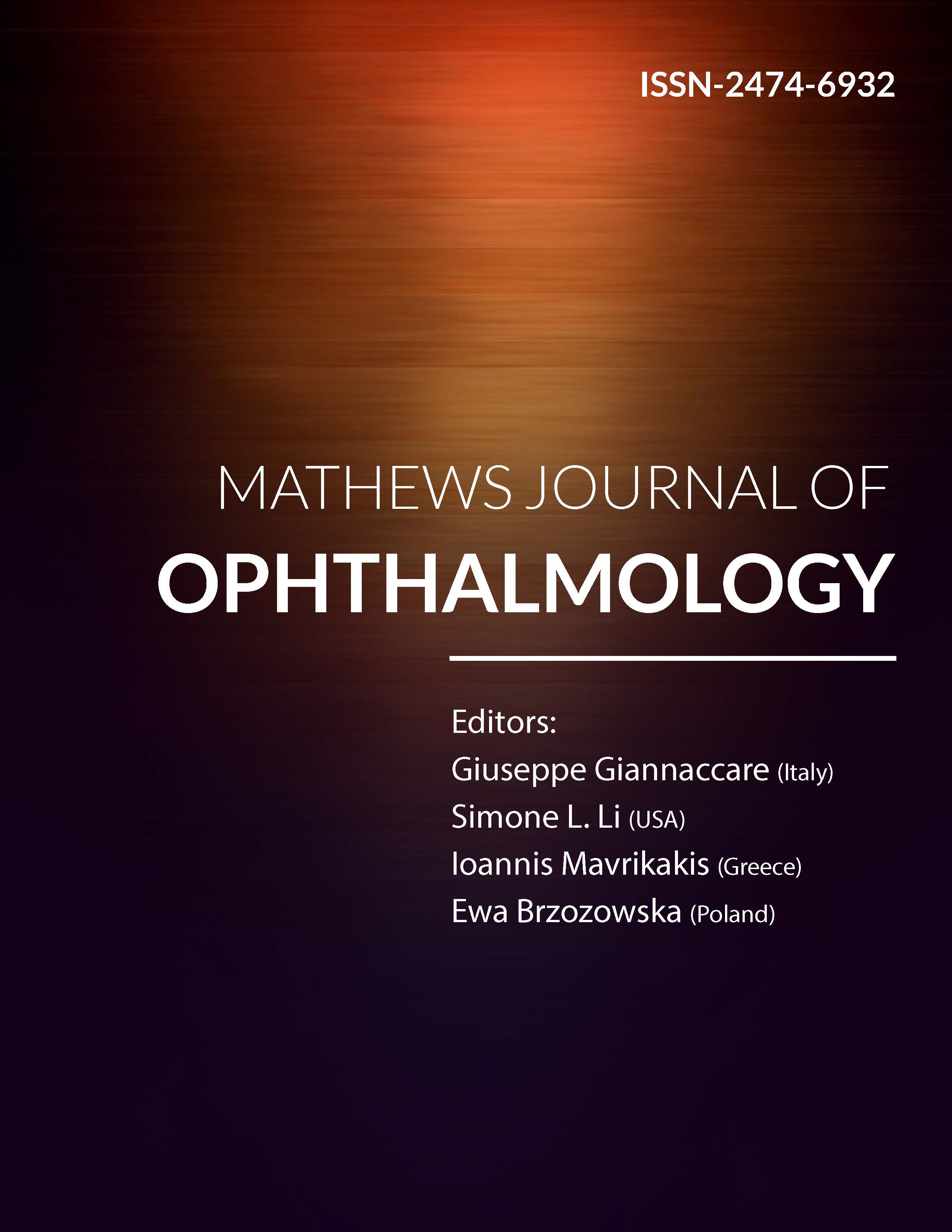
Information Links
Previous Issues Volume 8, Issue 2 - 2023
Correlation of Pterygium Induced Severity of Dry Eye Disease with Total Surface area of Pterygium
Shreya Thatte*, Shlok O Singh and Garvesh Modi
Department of Ophthalmology, Sri Aurobindo Institute of Medical Science, Indore, Madhya Pradesh, India
*Corresponding Author: Shreya Thatte, Department of Ophthalmology, Sri Aurobindo Institute of Medical Science, Indore, Madhya Pradesh, India; Email: [email protected]
Received Date: September 4, 2023
Publication Date: October 19, 2023
Copyright: Thatte S, et al. © (2023)
ABSTRACT
Aim: To compare the pterygium induced severity of dry disease with total surface area of pterygium. Methods: Various grades of primary Pterygium cases underwent series of dry eye tests like Schirmer’s I and II, TBUT and Tear Meniscus Height. Total surface area of pterygium was measured and calculated manually. The patients were grouped according to their area measurement. The Chi Square was used to investigate the relationship among all variables with surface area of pterygium to find out association with dry eye. Results: Total seventy-five primary pterygium patients with various grades were included in this study. As per calculated surface area of pterygium, they were grouped in 3 categories. Calculated dry eye score showed mild dry eye disease in 25 -55 sq. mm surface area , patients with 55- 85 sq. mm observed moderate dry eye score and moderate to severe dry eye score was seen in > 85 sq. mm group. The association between surface area of pterygium and all variable of the respondents found to be significant (P ˂0.05). The present study verifies the fact that amount of pterygium induced dry eye is directly proportional to surface area of pterygium. Conclusion: Severity of pterygium induced dry eye disease is directly proportionate to surface area of Pterygium.